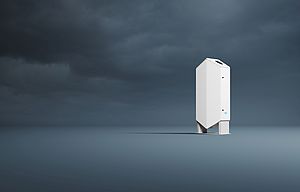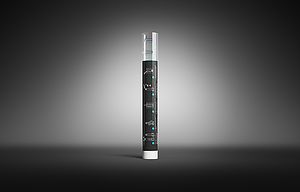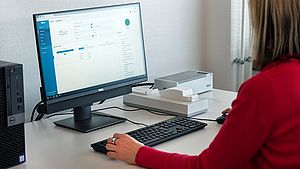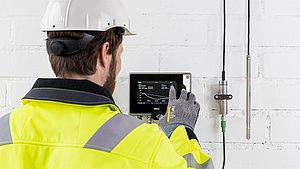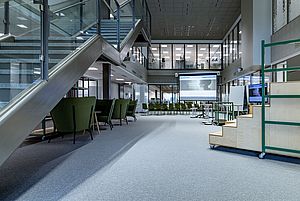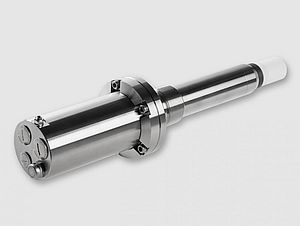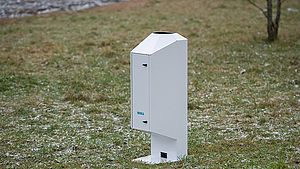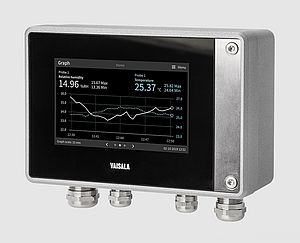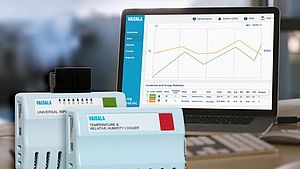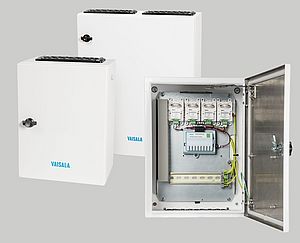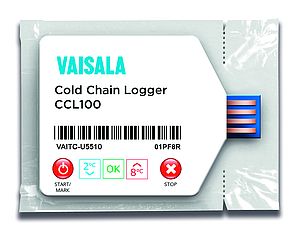Long-term care facilities have been especially vulnerable to COVID-19 outbreaks since the beginning of the pandemic, with some sources estimating that up to 40% of novel coronavirus-related deaths in the U.S. occurring in those facilities. To respond to this devastating situation and ensure that elderly people living in long-term care were included in research on treating the virus, a team of clinical development, clinical supply, and engineering experts came up with the idea of converting recreational vehicles (RVs) into mobile research units.
The drug manufacturer conducting this clinical trial already used Vaisala’s viewLinc system to monitor temperature, humidity, and other parameters in several cGMP environments at their facility. The question was, could the viewLinc system’s data loggers be used in the new mobile research units to send monitoring data back to their existing viewLinc system and send alerts for excursions? More importantly, could Vaisala provide such a solution quickly?
Conducting clinical trials in mobile units was almost unthinkable before COVID-19. But with the help of the VaiNet wireless monitoring technology and Vaisala’s quick-thinking project engineers, the drug manufacturer was able to put its mobile research units on the road within 30 days.
Mobilizing a monitoring system
The drug manufacturer contacted Vaisala. They would need monitoring in the refrigerators and freezers mounted inside the RVs newly outfitted as mobile research units. The RVs would be traveling the country to perform clinical trials in long-term care and nursing home facilities. However, due to the pandemic and the vulnerability of the residents, the implementation timeline for the monitoring system in the mobile research units was only a few weeks.
Because the fridges and freezers would be opened twenty times per day or more, it was critical to record temperatures inside the fridges and freezers every few minutes to ensure proper conditions were maintained. The temperature data history also needed to be automated, accurate, complete, and easily reportable. Ideally, the data would reside in their existing viewLinc monitoring system, which was validated. Most importantly, if any temperature excursions occurred, remote staff had to be alerted immediately by email or text message.
Leveraging modern communication technology
Vaisala project engineers used simple, off-the-shelf modems to enable several VaiNet AP10 network access devices to communicate from the mobile laboratories. This was achieved without a VPN to connect the access points in the RVs to the viewLinc server. This method requires only a modem and the inherent communication capabilities of the AP10.
The wireless RFL100 temperature and humidity data loggers use Vaisala’s proprietary VaiNet wireless technology. The modulation technique used by VaiNet is based on LoRa™ chirp spread spectrum. LoRa™ (Long Range) is a low-power, wide-area network (LPWAN) protocol.
VaiNet’s indoor signal range typically exceeds 100 m (300 ft.) and can easily penetrate walls and other barriers. Outdoors, the signal range is much higher. For instance, if the research staff were to take the RFL-100 data loggers outside the mobile labs, they could go several hundred feet from the RV and maintain connectivity to the AP10 network device. The AP10 access point functions as a base station for the VaiNet wireless data loggers.
Low power, simple, and fast
In the application, the RFL100 temperature probes were placed inside fridges and freezers. The AP10 was connected by Ethernet cable that included Power over Ethernet (PoE) to a network switch inside the RV. A typical PoE network switch provides roughly 48 to 50 volts along with network connectivity. This eliminated the need for DC power adapters for the AP10 network access devices. A 4G modem, which was also PoE-capable, was used. This allowed only one outlet to power the monitoring system; the network switch uses a power outlet and provides power to both the AP10 and the modem via PoE. However, all devices are equipped with power adapters, and if needed, the AP10 could connect directly to the modem.
The modem was used for communicating with the AP10, but also provided local internet access at a computer workstation inside the RV. The advantage to using a 3G/4G modem with the AP10 is that the AP10 uses an extremely low amount of data bandwidth. Although each AP10 can host up to 32 RFL100 data loggers, there is only a small amount of data going through the wireless modem, using very little bandwidth. Since cellular modem charges are based upon usage, this was a cost-effective solution. The modem communicates to a cell tower and allows the data to be sent over the Internet to the validated viewLinc server.
Stronger together
The mobile research units created in 2020 are currently deployed to COVID-19 outbreaks at facilities across the U.S. This clinical trial was the first of its kind and a steep learning curve for the many scientists, project managers, and engineers who worked to implement it. In a time when so many are isolated, few are as isolated or vulnerable as people living in nursing homes and long-term care. Vaisala is proud to provide a solution to a research organization undertaking an innovative endeavor to help in an urgent situation.







